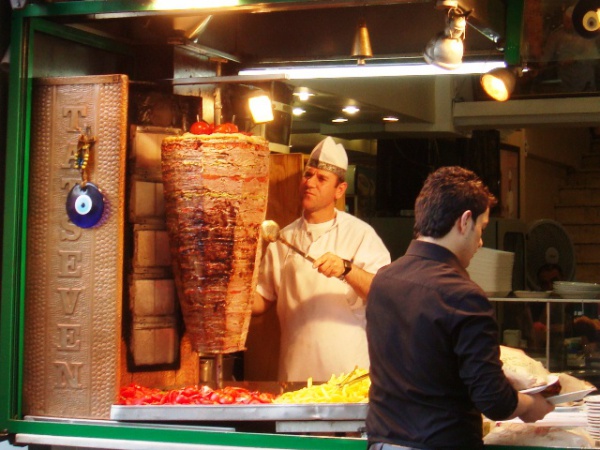Facts About Doner kebab
Doner kebab is a delectable variety of kebab crafted from seasoned meat cooked on a vertical rotisserie. The meat is arranged into an inverted cone shape and thinly shaved as it cooks. This appetizing dish traces its origins back to the Ottoman Empire and has inspired other beloved dishes like shawarma, gyros, and al pastor. Doner kebab can be enjoyed in numerous ways: served on a plate with sides, in a pita sandwich, or wrapped in flatbread known as dürüm. The sandwich version rose to popularity in the 1970s and is often referred to simply as a "kebab."
The origins of doner kebab can be traced back to the Ottoman Empire, with Bursa, Turkey, frequently cited as its birthplace. The dish gained global acclaim in the mid to late 20th century, leading to variations such as gyros in Greece and donair in Canada. Turkish guest workers introduced doner kebab to Germany in the early 1970s, making it a favorite throughout Europe and beyond.
The term "doner kebab" is derived from the Turkish words "döner kebap" where "döner" means "rotating" and "kebab" refers to grilled meat dishes. There are numerous regional variations of doner kebab, extending from Turkey to the Caucasus, the Middle East, Asia, Europe, the Americas, and Oceania. In the United States and Australia, it is commonly known as gyros, while in Canada, it is referred to as donair.
Nevertheless, there are some health concerns associated with doner kebab, such as hygiene during storage and reheating, meat quality, and high levels of salt, fat, and calories. Some investigations have uncovered low-quality ingredients or mislabeled meat types. To ensure public safety, many countries have enacted food safety regulations for the handling and preparation of doner kebab, such as cooking the meat a second time after slicing and prohibiting the freezing of partially cooked meat for later sale.

 Czech Republic
Czech Republic